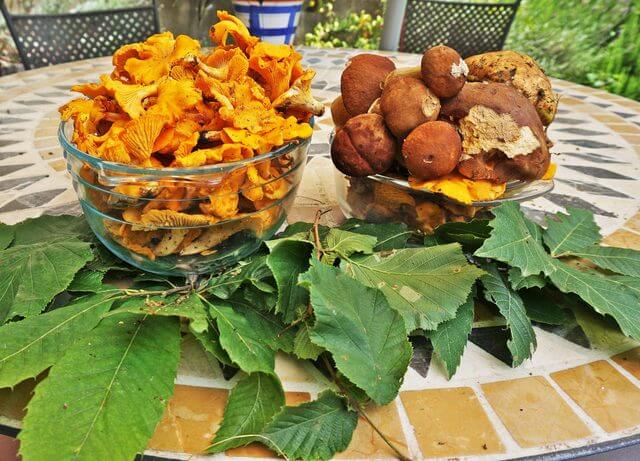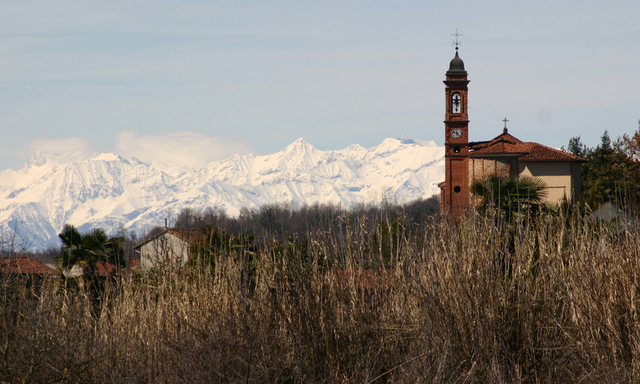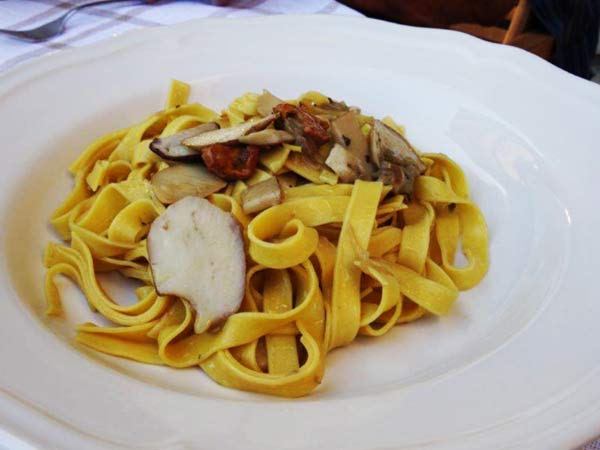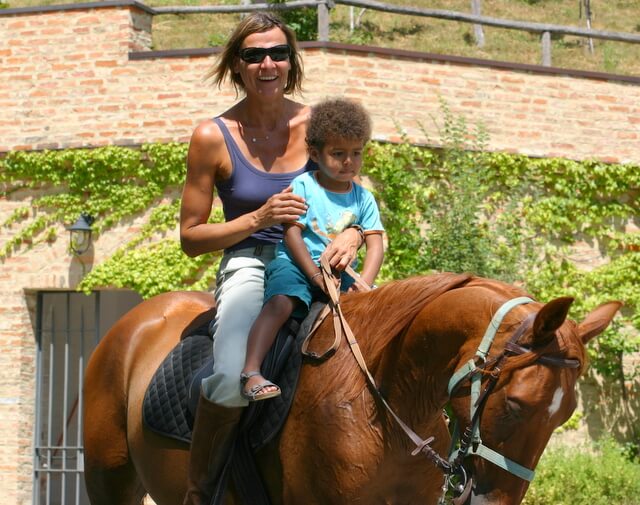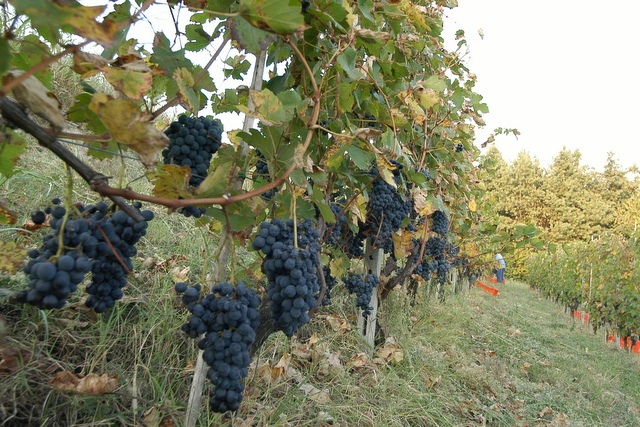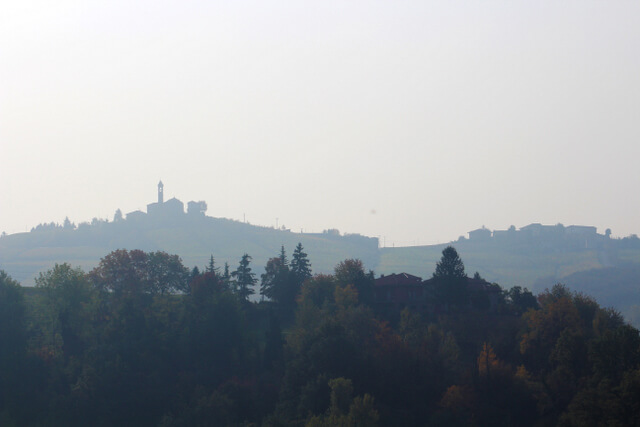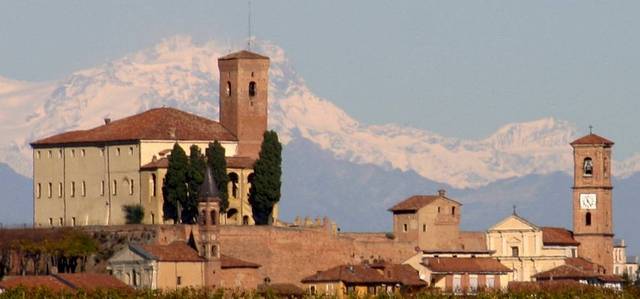Bagna Cauda
“Bagna Cauda” is the name of a meal very, very from Piedmont. It means “Hot Dip Sauce”.
This strongly flavoured meal is to be consumed in late Fall and in Winter: it is not recommended to eat “Bagna Cauda” in the spring or in summer, nor if you have a business meeting next day, for reasons evident if you keep reading.
“Bagna Cauda” is a gourmet feast made of anchovies, garlic and olive oil, cooked until the components become a creamy sauce. This is put hot (and kept so by a burner underneath) in an earthenware saucepan in the middle of the dining table, in which one dips the season’s vegetables: the hunchback thistle from Nizza Montferrato, the celery, the pepper, raw or oven cooked, the onion, strictly oven cooked, the topinambur (everybody knows this tuber by it’s popular name Helianthus tuberosus, or as the Jerusalem artichoke), the turnip, oven cooked, the Brussels cauliflowers (a later addition to the recipe, because, coming from Belgium, it was not commonly available in Piedmont during the Middle Ages), boiled and broiled, endives, leek, boiled potatoes, oven cooked pumpkin, apples, and anything available, but meat.
This is a strictly vegetarian meal.
The dish was invented by accident, or fertile imagination, out of the pressing need to feed family and relatives in winter, when no crops were available; as a matter of fact, if Piedmont had the wine, the veggies, and the garlic, it certainly did not have anchovies nor extra virgin, cold pressed, first choice, olive oil.
Apparently, and this is history brought to our times by word of mouth, and by no means the only theory espoused by historians, two things happened back then: the mountain farmers of Val Maira, decided to barter hats, woollen clothes, and oak barrels (what we call today “barrique”) of which they were abundant, with fish and salt, of which they had none. Fish for food, and salt for their cows, sheeps and goats. They did barter with the people of Liguria because neither they, nor them, had the money to pay for what they wanted to trade. Salt, by the way, was a commodity very sought after in Piedmont: in the very spirit with which lords and kings and the likes where managing and supporting their vassals, salt was heavily taxed.
So, the mountain farmers of Val Maira would walk to Liguria, barter salt and anchovies, then cheap and abundant in the Mediterranean sea, for hats and capes; they would put the salt and the anchovies in their wooden barrels, anchovies on top, claiming, when stopped by the local sheriff, that the barrels contained only anchovies (not taxed) and no salt, and would sell both on the road as well as once back home. No one has ever reported a sheriff checking for salt under the fish, nor of fining a Val Maira farmer for trading on salt, and not pay the corresponding taxes.
Keeping in mind that in those times refrigerators were not widely available, storing fish in salt made sense. So this part of the hearsay is probably true. One can argue that the trade was done with Liguria, or that the salt would come from Spain, but salted fish looks like a sure thing.
The link between the trade in salt and anchovies, the veggies and, ultimately, the “Bagna Caoda” has not been firmly established: but some would argue that the availability of these ingredients, and a lot of imagination by a local cook, resulted in its invention.
The original recipe follows.
The original recipe
Ingredients: 3 salted anchovies per person, 1 head of garlic per person, ½ glass of olive oil per person, 1 glass of milk, 1 glass or 2 of tomato sauce, and all the vegetables listed above, raw, boiled or broiled.
Preparation: put the anchovies in water overnight, then wash in fresh water, then de-bone the fish. Cut the garlic cloves in pieces then put anchovies and garlic in a pan and cook, very slowly: never, ever let the oil boil or the garlic brown. Add the glass of milk and the tomato sauce when the anchovies start to melt. Cook for as long as required for the mix to become a creamy sauce.
Served: hot, with vegetables. Add cold oil to the sauce as required while eating.
“Bagna Cauda” is very filling: it is a one course meal. But being also pretty heavy to digest, it is normally followed by a light bouillon of beef. “Bagna Caoda” also causes the person eating it to have a strong garlicky flavoured breath for quite a while, normally for a few days.
Today’s recipe
This (lighter) version of the original recipe is definitely easier on your stomach: furthermore your breath will be garlicky for only one day.
Ingredients: 3 salted anchovies per person, 3 cloves of garlic per person, ½ glass of olive oil per person, 1 glass of milk, 1 glass or 2 of tomato sauce, and all the vegetables listed above, raw, boiled or broiled.
Preparation: put the anchovies in water for a fortnight, then wash in fresh water, then de-bone the fish. Cut the garlic cloves in small pieces and boil them in milk until they become mushy. This operation will take out the sting of the garlic while maintaining its unique flavour. Then put anchovies and garlic in a pan and cook, very slowly: never, ever let the oil boil or the garlic brown. Add one or two glasses of milk and the tomato sauce when the anchovies start to melt. Cook for as long as required for the mix to become a creamy sauce.
Served: hot, with vegetables. Add cold oil to the sauce as required while eating.



